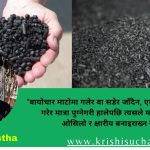Agriculture: Introduction, Prospect & Problems in Nepal

None of us can live without agriculture, what we eat is agriculture and what we wear is agriculture too. Nepal is culturally an agriculture based country. In Nepal, the economy is dominated by agriculture. 66% of the total population is engaged in agriculture and its contribution to GDP is one third. Due to climate diversification most of the crops can be grown in Nepal.
Since the formation of the Fifth-Five-Year Plan (1975-80), agriculture has been the highest priority because economic growth was dependent on both increasing the productivity of existing crops and diversifying the agricultural base for use as industrial inputs. The adoption of the 20-years Agriculture Perspective Plan(APP) in 1977 reflects the emphasis the government has given on the agricultural sector and its commercialization.
Nepal has climatic zones ranging from tropical to tundra with a narrow band of altitude representing almost all available climates of the world. There is a mono-model peak of monsoon which is important for the main rice growing period. There is occasional precipitation in the form of winter rains which are of great importance for winter crops such as wheat and barley, winter legumes and vegetables. Nepali tea is considered some of the best tea in the world, with the major export markets in Europe and the US. Cardamom, turmeric and cinnamon are the main spices exported from Nepal. It is also a dominant source of raw material.
Although, of these possibilities, development of agriculture in Nepal has not been satisfactory for a long. Nepalese agriculture sector has some key problems. The first factor is capital. Most of the farmers are poor. They merely adopt advanced technology and their production is limited to households. Second factor is human resources. There is a dearth of skilled in agriculture and deficiency of trained human resources. Very limited resources for agriculture search are also contributing to poor innovation. Third factor is socio-economic conditions. Our society still considers agriculture as a poor man’s business and none of us is encouraging our children to have higher study in agriculture. Similarly, population growth, low investment in agriculture, political instability, etc.
Even though, Nepalese agriculture is webbed with many problems, there is huge potential for agricultural development. Farmers should be trained to use modern technology, fertilizers, seeds and modern tools. Also the agricultural technicians should provide assistance to the farmers at the time of need. To increase the productivity of crops, irrigation systems should be developed. Market for agro-products should be well managed and farmers must get fair prices for their products. Various cash crops and medicinal herbs like cannabis should be cultivated as there is high demand for such herbs in the international market.
In the nutshell, Nepalese agriculture has huge potential for its comparative development. However, its condition must be fulfilled timely and commitment should be made by all levels. Efficient supply chain and market chain will certainly help the agricultural development of Nepal.
Writer: Sushmita Thapa (Student, Bsc. Ag IAAS Paklihawa Campus)

 दिल्लीको होटलमा बसेर क्यानडा र अमेरिकामा मानव तस्करी
दिल्लीको होटलमा बसेर क्यानडा र अमेरिकामा मानव तस्करी  अनलाइन जुवा खेलाएर काभ्रेका अनिलले गरे दुई अर्बको कारोबार
अनलाइन जुवा खेलाएर काभ्रेका अनिलले गरे दुई अर्बको कारोबार  मुख्यमन्त्री सोडारीले विश्वासको मत लिन सुदूरपश्चिमको प्रदेश सभा बैठक आव्हान
मुख्यमन्त्री सोडारीले विश्वासको मत लिन सुदूरपश्चिमको प्रदेश सभा बैठक आव्हान  अफगानिस्तानमा बाढीबाट ३१५ भन्दा बढीको मृत्यु
अफगानिस्तानमा बाढीबाट ३१५ भन्दा बढीको मृत्यु  सुँगुरको मिर्गौला प्रत्यारोपण गरिएका रिचर्डको निधन
सुँगुरको मिर्गौला प्रत्यारोपण गरिएका रिचर्डको निधन 


